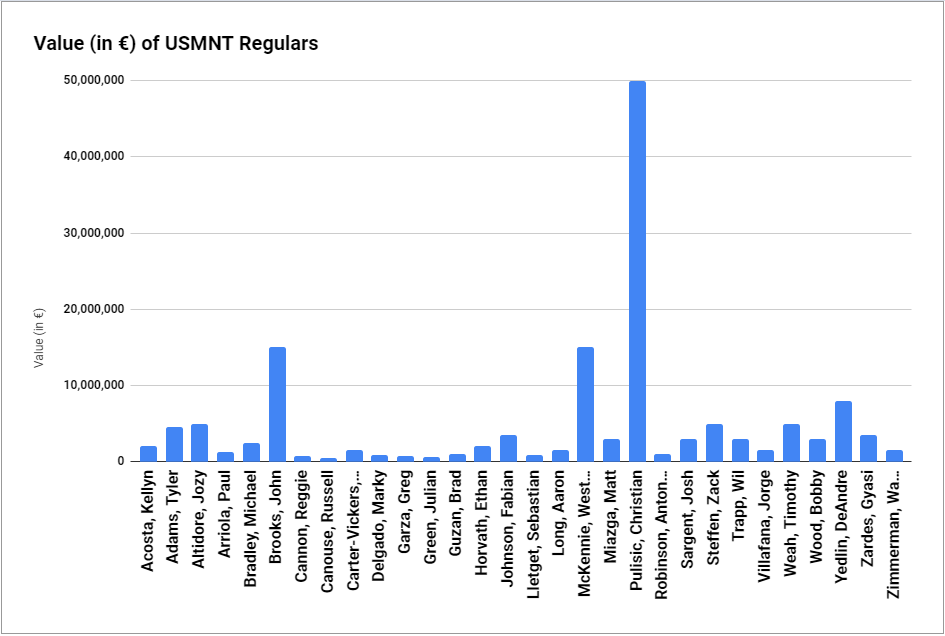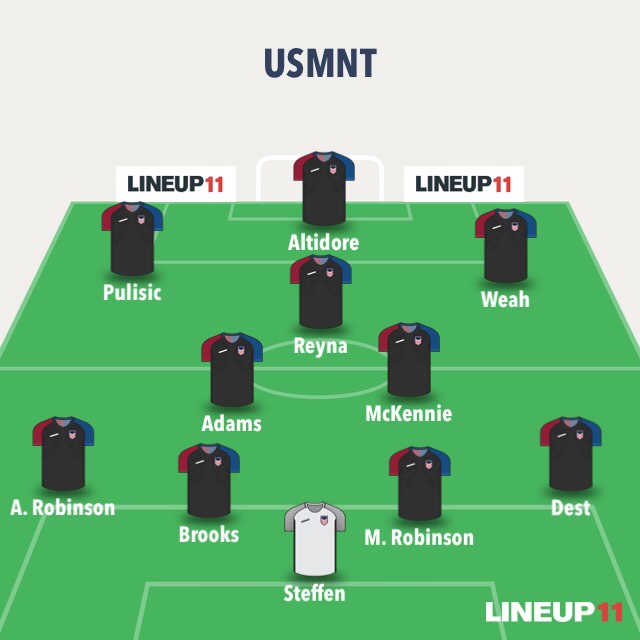If you’ll check the list of links you’ll notice a new item called the “Hype Tracker.” I will be updating it periodically and it will be two lists/charts of players. The first list is USMNT Regulars. This is a list of the players that are regularly called in with the full national team. Obviously, it will change over time as the player pool evolves (ie – Lovitz turns into a regular option at LB or Acosta stops getting called into camps).
The second list is “Baby Nats.” This is a list of the top prospects in the US youth pool. I’m sure there are players missing that others would have included, but I wanted to try to keep it to a reasonable number (20-25) players. As with the other list I will add/remove players as players emerge or fall away.
So how exactly are we tracking “hype?” The only semi-objective way I could think of was value and for that I will be going with the values provided by Transfermarkt. This is a German-based website that provides player values and other information.
Link to Google Sheet for larger view.
Here is the first version of the USMNT Regular graph:

As you can see, Christian Pulisic is by far the most valuable player on the list with McKennie and Brooks both rated at 15 million.
And the first Baby Nat graph:

I’d argue with a few of these ratings (Mendez should be higher), but then again I’m probably a bit too excited about some of these youth prospects.
A bar graph was my choice to display the initial values of the players, but I will be changing it to a line graph next update since it will be (I think) a better way to display the data over time. My initial thought is to update this once a month or so, but we’ll see how things progress.
Here’s the text version of the two graphs if anyone would prefer.
If you think I’ve left off someone glaringly obvious let me know.






Roldan?
Wasn’t sure on him, but after the buzz about him from camp I should probably add him.
You should track this over time, could be interesting to track trends! and see what affects them
That’s the plan 🤓